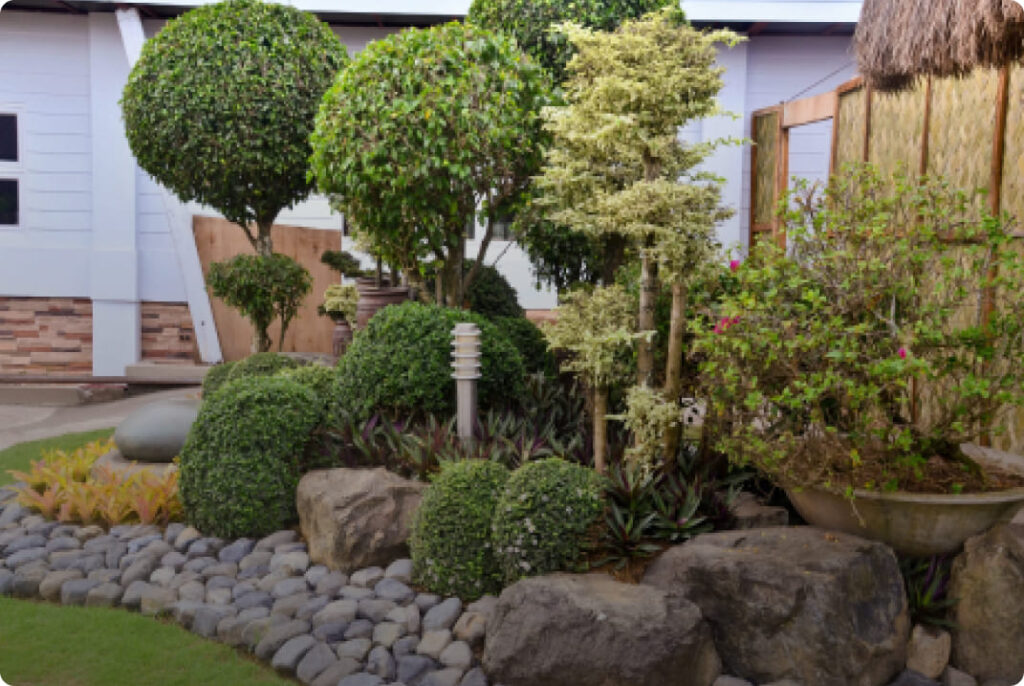By taking a few simple steps when designing and maintaining your yard, you and your family can enjoy a unique, attractive landscape that saves water.
Plants
Use regionally appropriate, low water-using and native plants.
Once established, these plants require little water beyond normal rainfall. Also, because native plants are adapted to local soils and climatic conditions, they rarely require the addition of fertilizer and are more resistant to pests and diseases than are other species. Be careful when selecting exotic species, as some may be invasive, which may require more water and could displace native plants.
Group plants according to their water needs.
Grouping vegetation with similar watering needs into specific “hydrozones” reduces water use by allowing you to water to each zone’s specific needs. For example, turf areas and shrub areas should always be separated into different hydrozones because of their differing water needs.
Plan a water-efficient landscape.
If you’re designing a new landscape or rethinking your current landscape, the WaterSense Water Budget Tool can help you plan your landscape for water-efficiency. With two simple inputs – zip code and yard size – the water budget tool helps users design their landscape to use a level of water that is appropriate for their climate.
Recognize site conditions and plant appropriately.
Areas of the same site may vary significantly in soil type or exposure to sun and wind, as well as evaporation rates and moisture levels. Be mindful of a site’s exposure to the elements and choose plants that will thrive in the site’s conditions.
Place turfgrass strategically.
Turfgrass receives the highest percentage of irrigation water in traditional landscaping. Commonly used varieties of turfgrass require more water than many landscape plants. In addition, homeowners tend to over water turfgrass. As a result, landscapes with large expanses of turfgrass generally use more water than those planted with a mixture of other plants such as groundcovers, shrubs, and trees. To reduce outdoor water use, plant turfgrass only where it has a practical function, such as a play area. Choose turfgrass types that don’t use a lot of water. Select low-water-use or native grasses and those that can withstand drought.
Minimize steep slopes.
Slopes can be challenging because of the potential for erosion and runoff. If slopes cannot be avoided in landscape design, install plantings with deeper root zones such as native ground covers and shrubs to provide stabilization and prevent erosion.
Maintenance
Raise your lawn mower cutting height.
Raise your lawn mower blade, especially in the summer, when mowing too close to the ground will promote thirsty new growth. Longer grass promotes deeper root growth and a more drought resistant lawn. Longer grass blades also help shade each other, reducing evaporation, and minimizing weed growth. The optimal turfgrass height is the tallest allowable height within the recommended mowing range for the turf species grown.
Provide regular maintenance.
Replace mulch around shrubs and garden plants, and remove weeds and thatch as necessary.
Minimize or eliminate fertilizer.
Fertilizer encourages thirsty new growth, causing your landscape to require additional water.



